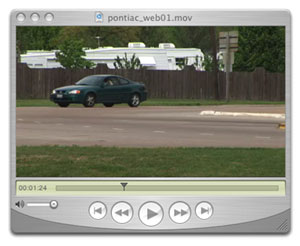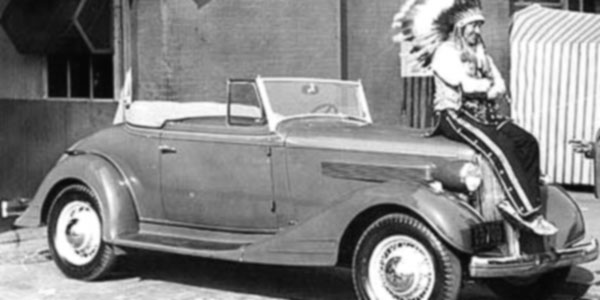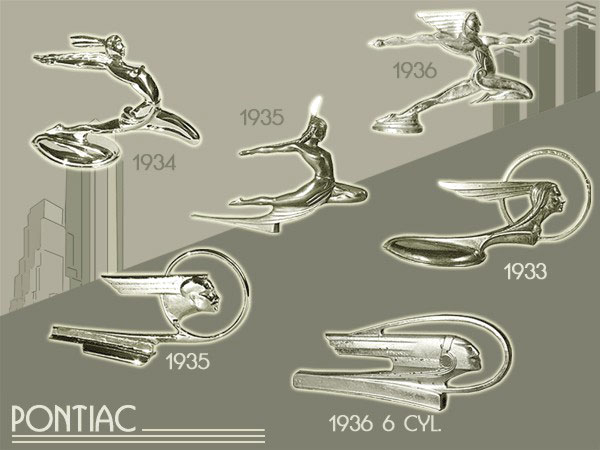
On April 20, 1769, a nephew of Makatchinga, a Peoria chief of the Illinois confederation, murdered Chief Pontiac in the streets of the French village of Cahokia. His death marked the limits of chieftainship.
Encyclopedia of North American Indians
Richard White
 In such situations, we need not be surprised to find that the Indian in the car - estranging and somehow unfair - became the subject of humor and critique. Jokes, songs, poems, postcards, and stories about Geronimo's Cadillac and other occasions of Indian automobility allowed the stories of Indian primitivism and white technological progress to maintain a distinct separation from Indian drivers and, thus, to retain their power as images. Making this choice, of course, meant yet another refusal on the part of Americans to view Indians as real people whose relation to automobiles was similar to their own. Humor allowed listeners and tellers safely to regard Indians in limos and Geronimos in Caddies as anomalies: the meeting of Indians, money, and cars was not to be considered the norm.
In such situations, we need not be surprised to find that the Indian in the car - estranging and somehow unfair - became the subject of humor and critique. Jokes, songs, poems, postcards, and stories about Geronimo's Cadillac and other occasions of Indian automobility allowed the stories of Indian primitivism and white technological progress to maintain a distinct separation from Indian drivers and, thus, to retain their power as images. Making this choice, of course, meant yet another refusal on the part of Americans to view Indians as real people whose relation to automobiles was similar to their own. Humor allowed listeners and tellers safely to regard Indians in limos and Geronimos in Caddies as anomalies: the meeting of Indians, money, and cars was not to be considered the norm.

 Robert Rogers's play Ponteach: A Tragedy made Pontiac the most famous Indian of the eighteenth century. Francis Parkman's History of the Conspiracy of Pontiac renewed and extended that fame into the nineteenth and twentieth centuries. These men created a powerful figure - a noble Indian who symbolized not only his race's fall but also the supposedly incompatible destinies of Indians and whites. But the real Pontiac was a more complicated and more interesting figure. If his life must be reduced to a symbol, then it can just as well be represented by nearly the opposite proposition: that an accommodation between Indians and Europeans was possible and that in change lay opportunity as well as danger.
Robert Rogers's play Ponteach: A Tragedy made Pontiac the most famous Indian of the eighteenth century. Francis Parkman's History of the Conspiracy of Pontiac renewed and extended that fame into the nineteenth and twentieth centuries. These men created a powerful figure - a noble Indian who symbolized not only his race's fall but also the supposedly incompatible destinies of Indians and whites. But the real Pontiac was a more complicated and more interesting figure. If his life must be reduced to a symbol, then it can just as well be represented by nearly the opposite proposition: that an accommodation between Indians and Europeans was possible and that in change lay opportunity as well as danger.
Pontiac was an Ottawa war leader who took an indeterminate part in the increasingly anti-English councils and negotiations among the western allies of the French following the fall of Canada to the British in 1760. During these same years he came under the influence of Neolin, the Delaware prophet who preached a nativist message of Indian renewal. Neolin's doctrine, with its references to Christianity and its demand that Indians return to their old ways, was part of a growing movement of religious syncretism in the region. Pontiac adopted it, but only in part. He modified Neolin's anti-white message, stripped it of its renunciation of European technology, and turned it into a more specifically anti-English doctrine....
... Unfortunately, Pontiac came to believe that he was indeed the leader of a vast Indian confederation. From an Ottawa war leader seeking the return of his French father, he transmuted himself into a pretended Indian emperor in league with the British. It proved a fatal miscalculation. By 1766 he was acting arrogantly and imperiously, assuming powers no western Indian leader possessed. A French trader offered to bet that he would be dead in less than a year "if the English took so much notice of him." At Detroit he stabbed an Illinois leader; he lost virtually all influence among the Ottawas of Detroit and the Maumee River, where young warriors beat him. By 1768 he had become both the most famous Indian in the West and a man without a home. He retreated into exile among the Illinois, where his actions had made him enemies. There he belatedly proved the French trader right. On April 20, 1769, a nephew of Makatchinga, a Peoria chief of the Illinois confederation, murdered him in the streets of the French village of Cahokia. His death marked the limits of chieftainship.
Encyclopedia of North American Indians
Richard White

| Next >> | Home >> |